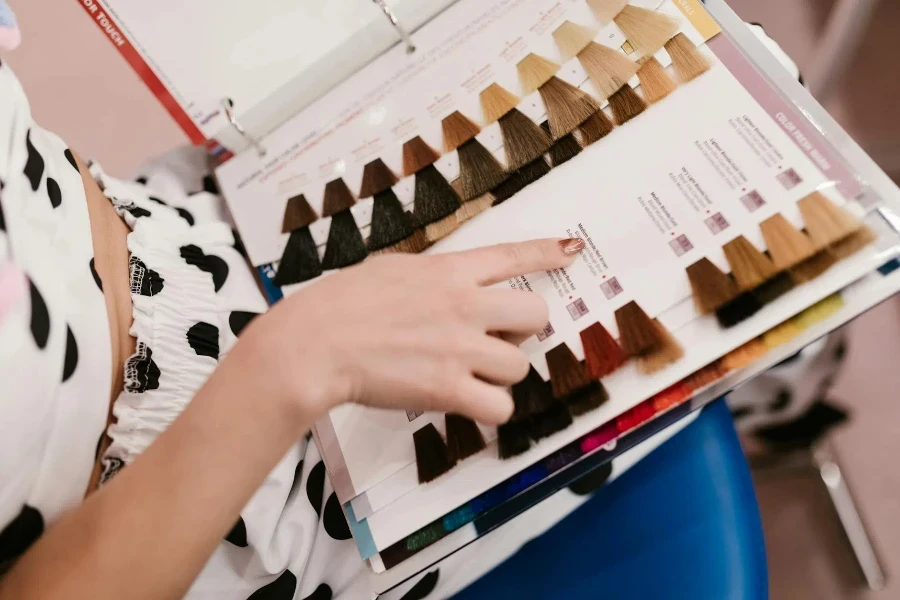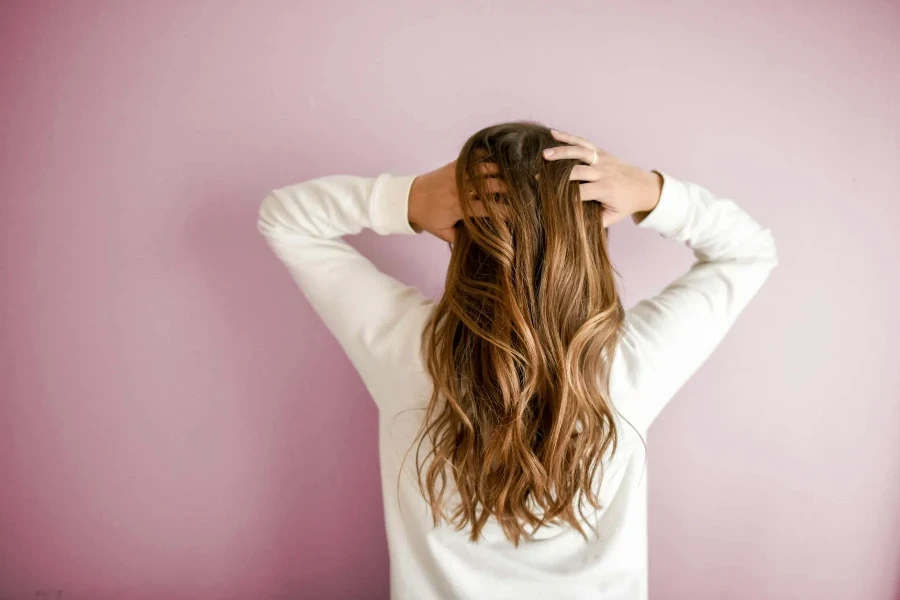In the ever-evolving world of beauty and personal care, hair color remains a powerful tool for self-expression and transformation. As we step into 2025, light brown hair color is emerging as a popular choice among consumers, driven by its versatility and natural appeal. This guide delves into the nuances of light brown hair color, exploring its market potential and the factors fueling its demand.
Table of Contents:
– Understanding Light Brown Hair Color and Its Market Potential
– Exploring Popular Types of Light Brown Hair Color Products
– Addressing Common Consumer Pain Points and Solutions
– Innovations and New Products in the Hair Color Market
– Final Thoughts on Sourcing Light Brown Hair Color Products
Understanding Light Brown Hair Color and Its Market Potential

Defining Light Brown Hair Color: What It Is and Why It Matters
Light brown hair color, characterized by its warm and natural tones, offers a middle ground between blonde and dark brown shades. This color is celebrated for its ability to complement a wide range of skin tones, making it a versatile choice for consumers seeking a subtle yet noticeable change. The appeal of light brown hair color lies in its ability to enhance natural beauty while providing a fresh and youthful look.
Analyzing Market Demand: Social Media Trends and Consumer Preferences
The demand for light brown hair color is on the rise, influenced by social media trends and the preferences of beauty enthusiasts. Platforms like Instagram and TikTok are abuzz with hashtags such as #LightBrownHair and #BrownHairGoals, showcasing a plethora of styles and inspirations. Influencers and celebrities sporting light brown hues have further propelled its popularity, making it a sought-after choice for those looking to stay on-trend.
According to a professional report, the global hair color market is projected to grow significantly, with light brown shades playing a crucial role in this expansion. The report highlights that consumers are increasingly seeking personalized and customizable hair color solutions, driving innovations such as virtual try-on tools and color-matching technologies. These advancements empower consumers to experiment with different shades, including light brown, before making a commitment.
Aligning with Broader Trends: Sustainability and Natural Ingredients
In 2025, the beauty industry is witnessing a shift towards sustainability and the use of natural ingredients, and the hair color segment is no exception. Consumers are becoming more conscious of the environmental impact of their beauty choices, leading to a growing demand for eco-friendly and cruelty-free hair color products. Light brown hair color formulations that incorporate natural and plant-based ingredients are gaining traction, appealing to consumers who prioritize both beauty and sustainability.
Brands are responding to this trend by developing hair color products that minimize chemical content while maintaining efficacy. The inclusion of nourishing ingredients such as oils, vitamins, and antioxidants not only enhances the health of the hair but also aligns with the broader trend of holistic beauty. This focus on sustainability and natural ingredients is expected to drive the growth of light brown hair color products in the coming years.
In conclusion, light brown hair color is poised to be a significant player in the hair color market in 2025. Its versatility, alignment with social media trends, and compatibility with sustainable beauty practices make it an attractive choice for consumers. As the demand for personalized and eco-friendly hair color solutions continues to rise, light brown shades are set to capture the attention of business buyers, including retailers and wholesalers, looking to meet the evolving preferences of their customers.
Exploring Popular Types of Light Brown Hair Color Products

Permanent vs. Semi-Permanent: Pros and Cons
When it comes to light brown hair color products, business buyers must understand the fundamental differences between permanent and semi-permanent options. Permanent hair color products are designed to provide long-lasting results by penetrating the hair shaft and altering its natural pigment. This type of hair color is ideal for consumers seeking a significant and enduring transformation. According to a professional report, permanent hair color products are favored for their ability to offer a wide range of shades, from natural hues to bold, unconventional colors. This versatility ensures that consumers can find a shade that aligns with their personality and style preferences.
On the other hand, semi-permanent hair color products offer a less invasive alternative. These products coat the hair shaft without penetrating it, resulting in a temporary color change that typically lasts for several weeks. Semi-permanent hair colors are ideal for consumers who enjoy experimenting with different shades without committing to a long-term change. They are also less likely to cause hair damage, making them a popular choice for individuals with sensitive scalps or damaged hair. Business buyers should consider stocking both types of products to cater to a diverse customer base with varying needs and preferences.
Natural and Organic Options: Ingredients and Effectiveness
The demand for natural and organic hair color products has surged in recent years, driven by consumers’ growing awareness of ingredient safety and environmental impact. Natural and organic hair color products are formulated with plant-based ingredients and free from harsh chemicals such as ammonia, parabens, and sulfates. These products are designed to provide a gentler coloring experience while still delivering vibrant and lasting results.
Brands like Herbatint and Naturtint have gained popularity for their commitment to using natural ingredients and sustainable practices. Herbatint, for example, offers a range of light brown hair color products enriched with herbal extracts like aloe vera and witch hazel, which help nourish and protect the hair during the coloring process. Naturtint, on the other hand, incorporates ingredients like oleic acid derived from olives and meadowfoam seed oil to enhance color longevity and shine.
Business buyers should prioritize sourcing natural and organic hair color products that meet stringent safety and efficacy standards. These products not only appeal to health-conscious consumers but also align with the broader trend towards sustainable and eco-friendly beauty solutions.
Consumer Feedback: What Buyers Are Saying
Understanding consumer feedback is crucial for business buyers when selecting light brown hair color products. Positive reviews and testimonials can provide valuable insights into product performance, customer satisfaction, and potential areas for improvement. According to a professional report, consumers often praise light brown hair color products for their ability to deliver natural-looking results and enhance overall hair health.
For instance, many consumers appreciate the rich, multidimensional tones offered by brands like L’Oréal and Clairol. L’Oréal’s Excellence Crème line, for example, is frequently lauded for its ability to provide even coverage and long-lasting color while conditioning the hair. Similarly, Clairol’s Natural Instincts range is praised for its gentle, ammonia-free formula that leaves hair feeling soft and healthy.
Business buyers should pay close attention to consumer feedback when evaluating potential suppliers and products. By selecting products that consistently receive positive reviews, buyers can ensure they are offering high-quality options that meet customer expectations and drive repeat purchases.
Addressing Common Consumer Pain Points and Solutions

Concerns About Hair Damage: Mitigating Risks
One of the most common concerns among consumers when it comes to hair coloring is the potential for hair damage. Harsh chemicals and repeated coloring can weaken the hair shaft, leading to dryness, breakage, and overall hair health deterioration. To address these concerns, business buyers should prioritize sourcing hair color products that incorporate nourishing ingredients and advanced formulations designed to minimize damage.
Brands like Olaplex and Schwarzkopf have developed innovative solutions to mitigate hair damage during the coloring process. Olaplex’s Bond Multiplier technology, for example, works by repairing and strengthening the hair’s internal structure, reducing the risk of damage and breakage. Schwarzkopf’s Professional Igora Royal line includes lipid carriers that help protect the hair’s surface and maintain moisture levels, resulting in healthier, more resilient hair.
By offering products that prioritize hair health, business buyers can address a significant consumer pain point and build trust with their customers. Additionally, providing educational resources and tips on proper hair care can further enhance customer satisfaction and loyalty.
Achieving the Perfect Shade: Tips and Tricks
Achieving the perfect shade of light brown can be challenging, especially for consumers with darker or previously colored hair. Business buyers can help their customers achieve their desired results by offering a range of products and tools designed to facilitate the coloring process. This includes pre-color treatments, color-correcting products, and post-color care solutions.
Pre-color treatments, such as color removers and clarifying shampoos, can help prepare the hair for a more even and consistent color application. Brands like Color Oops and Malibu C offer effective solutions for removing unwanted color and buildup, creating a clean canvas for new color application. Color-correcting products, such as toners and glosses, can help neutralize unwanted undertones and enhance the vibrancy of the final color. Wella’s Color Charm Toners, for example, are popular among consumers for their ability to achieve salon-quality results at home.
Post-color care is equally important in maintaining the longevity and vibrancy of the hair color. Products like sulfate-free shampoos, color-protecting conditioners, and deep conditioning treatments can help preserve the color and keep the hair healthy. Redken’s Color Extend Magnetics line, for instance, is specifically formulated to protect and extend the life of colored hair.
Longevity and Maintenance: Ensuring Lasting Results
Ensuring the longevity of hair color is a top priority for many consumers. Business buyers can support their customers by offering products and advice that help maintain the vibrancy and health of colored hair. This includes recommending color-safe hair care products, providing tips on minimizing color fade, and offering solutions for touch-ups and maintenance.
Color-safe hair care products, such as those from Pureology and Joico, are formulated to protect the hair color from fading and damage. Pureology’s Hydrate Shampoo and Conditioner, for example, are sulfate-free and contain antioxidants and UV filters to shield the hair from environmental aggressors. Joico’s K-PAK Color Therapy line combines color protection with deep conditioning to repair and strengthen colored hair.
To minimize color fade, consumers should be advised to avoid excessive heat styling, limit sun exposure, and use cool water when washing their hair. Additionally, offering root touch-up products, such as sprays and powders, can help consumers maintain their color between salon visits. Products like L’Oréal’s Magic Root Cover Up and Clairol’s Root Touch-Up are convenient and effective solutions for covering regrowth and extending the time between full color applications.
Innovations and New Products in the Hair Color Market

Breakthrough Formulations: What’s New in 2025
The hair color market continues to evolve with the introduction of breakthrough formulations that cater to consumers’ demands for efficacy, convenience, and customization. In 2025, several innovative products have emerged, offering new benefits and improved performance. According to a professional report, advancements in formulation technology have led to the development of hair color products that deliver vibrant, long-lasting results while minimizing damage and enhancing hair health.
One notable innovation is the incorporation of bond-building technology in hair color products. Brands like Olaplex and Redken have introduced formulations that repair and strengthen the hair’s internal structure during the coloring process. Olaplex’s No. 4P Blonde Enhancer Toning Shampoo, for example, combines bond-building technology with color-enhancing pigments to maintain the vibrancy of blonde and light brown shades.
Another significant development is the rise of ammonia-free and low-ammonia hair color products. These formulations are designed to reduce scalp irritation and hair damage while still providing effective color results. Brands like Garnier and Revlon have introduced ammonia-free options that cater to consumers with sensitive scalps or those seeking a gentler coloring experience.
Technological Advancements: Smart Hair Color Solutions
Technological advancements have also played a crucial role in shaping the hair color market. Smart hair color solutions, such as virtual try-on tools and personalized shade-matching services, have revolutionized the way consumers choose and apply hair color. These technologies enable consumers to visualize different shades and styles before making a commitment, reducing the likelihood of disappointment and encouraging experimentation.
Brands like L’Oréal and Madison Reed have embraced these innovations, offering virtual try-on tools that allow consumers to see how different hair colors will look on them in real-time. L’Oréal’s Style My Hair app, for example, uses augmented reality to provide a realistic preview of various shades and styles. Madison Reed’s Color Bar offers personalized consultations and custom shade recommendations based on individual hair type and preferences.
These technological advancements not only enhance the consumer experience but also provide valuable data and insights for business buyers. By leveraging these tools, buyers can better understand consumer preferences and trends, allowing them to make informed decisions when selecting and stocking hair color products.
Emerging Brands to Watch: Who’s Leading the Way
The hair color market is constantly evolving, with new and emerging brands making their mark with innovative products and unique offerings. Business buyers should keep an eye on these brands to stay ahead of the competition and offer their customers the latest and most exciting options.
One such brand is Arctic Fox, known for its vibrant, semi-permanent hair color products that are vegan and cruelty-free. Arctic Fox has gained a loyal following among consumers seeking bold and unconventional shades, such as pastels and neons. The brand’s commitment to using high-quality, natural ingredients and its focus on sustainability have resonated with environmentally conscious consumers.
Another emerging brand to watch is Overtone, which offers color-depositing conditioners designed to maintain and enhance hair color between dye sessions. Overtone’s products are formulated with nourishing ingredients like shea butter and coconut oil, providing both color and conditioning benefits. The brand’s innovative approach to hair color maintenance has made it a popular choice among consumers looking for convenient and effective solutions.
Final Thoughts on Sourcing Light Brown Hair Color Products
In conclusion, sourcing light brown hair color products requires a comprehensive understanding of the various options available, from permanent and semi-permanent formulations to natural and organic alternatives. Business buyers must consider consumer feedback, address common pain points, and stay informed about the latest innovations and emerging brands. By offering a diverse range of high-quality products that cater to different needs and preferences, buyers can ensure they meet the demands of their customers and stay competitive in the dynamic hair color market.




